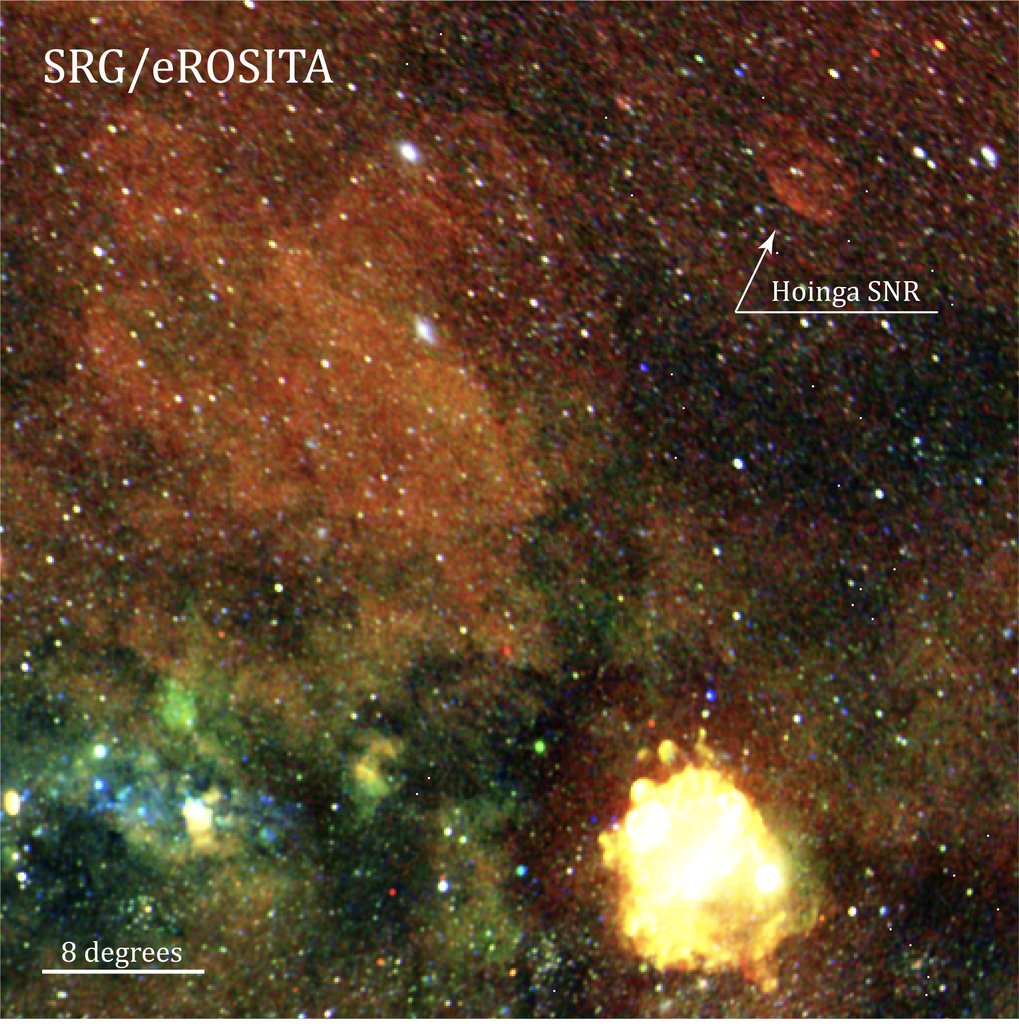 HEAPOW: Big Big Blast (2021 Mar 08)
HEAPOW: Big Big Blast (2021 Mar 08)
When mapping the entire sky, you're bound to find some interesting things never seen before. This is especially true if you're mapping the sky in high-energy X-ray radiation, since X-rays are produced by extreme objects: gravitationally accreting black holes and neutron stars, superstrong magnetic fields, extremely hot matter, powerful flares from stars, and the supernova explosions of dead and dying stars. The eROSITA telescope on the SRG spacecraft was designed to provide such a view of the entire X-ray sky. SRG, with eROSITA was launched on July 13, 2019, and eROSITA completed its first scan of the X-ray sky on June 11, 2020. Analysis of this trove of data by the eROSITA team is revealing one treasure after another. The most recent discovery is the image above, which shows a huge cloud of X-ray emitting debris produced by the supernova explosion of a (former) star in the Milky Way. This supernova remnant is the largest ever discovered in X-rays. The X-ray emitting debris produced by the explosion, shown in red in the image above, is produced by the superhot gas when the star ripped itself apart; this hot gas is bounded by a plasma of fast moving charged particles swept up by the power of the explosion, which emits in low-energy radio waves (shown in blue in the image above). This supernova remnant has been named Hoinga, which is the medieval name of Bad Hönningen am Rhein, the home town of the leader of the team that discovered it. Hoinga is huge, about 90 times the size of the full moon, and, unlike most of the supernova remnants in the Milky Way, is located far above the rotating disk where most of the stars in the Milky Way are located. The eROSITA telescope will continue to scan the sky from its lonely perch at the sun-earth L2 point, about a million miles from earth, building up an ever-deeper image of the high-energy Universe.
MPE: Hoinga: The Largest Supernova Remnant Ever Discovered with X-rays
| << Previous HEAPOW | High Energy Astrophysics Picture of the Week | Next HEAPOW >> |
